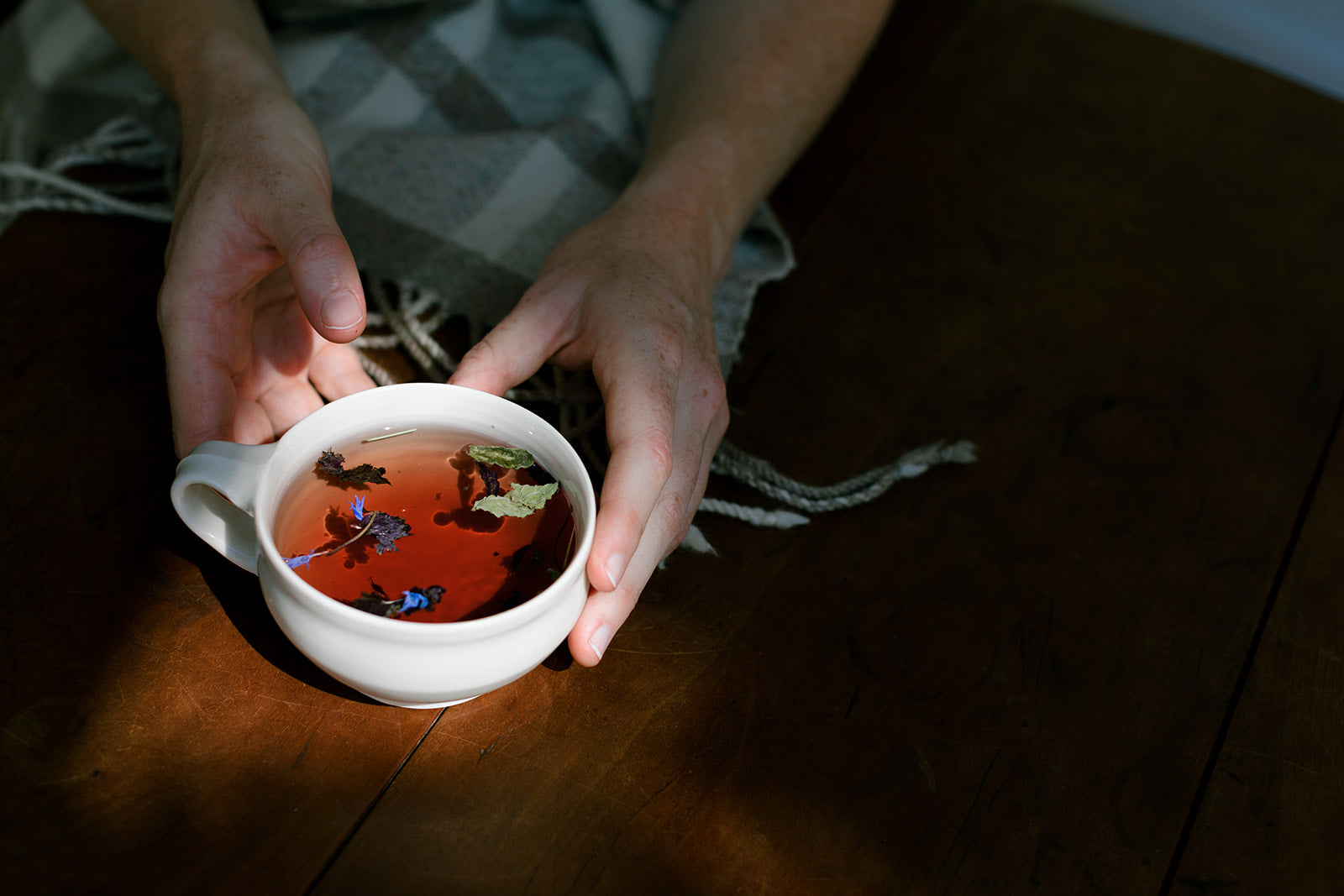Extreme Menstrual Cramps: Common, But Not Normal
When I was 16 I started having extreme period pain. I remember the first time my menstrual pain made me vomit - I was spending the weekend at a friend’s and we had just eaten cherries for a snack (I don’t recommend puking cherries). This became a pattern - the cramps would hit me in the middle of class, I would ask to go home and then midway home I would have to pull over on the side of the road to throw up. I had extreme menstrual cramps causing vomiting on and off in my teens and through most of my twenties - until I consulted an herbalist about it.
While most women experience pain during their periods (dysmenorrhea), up to 25% report menstrual cramps so severe they disrupt their lives. Unfortunately, the common response to complaints about extreme period pain is often a shrug and an ibuprofen. However, even mild to moderate cramps can indicate deeper health issues. If cramps are disrupting your life, it's best to consult a functional doctor, naturopath, or herbalist for testing and to design a pathway toward pain-free periods.

What Causes Period Cramps?
Menstrual pain usually stems from a trio of related factors: inflammation, hormone imbalance, and an overproduction of prostaglandins. Prostaglandins are hormone-like compounds are responsible for uterine contractions during menstruation to shed the uterine lining. While essential for normal bodily functions, excessive prostaglandins can cause chronic inflammation and intense pain. Chronic inflammation can be caused by a network of triggers but is often influenced by diet and gut health, stress, sleep, and environmental toxins like endocrine-disrupting chemicals.
Causes of Hormonal Imbalance in Women
Causes of hormone imbalance in women can be multifaceted, but two common factors are stress and poor diet. After addressing stress and proper nourishment, it's crucial to examine our exposure to endocrine-disrupting chemicals (EDCs). These environmental toxins mimic estrogen, triggering hormonal imbalances and affecting our reproductive systems. They also contribute to serious chronic diseases like diabetes, obesity, autoimmune disorders, and thyroid problems.
EDCs are found in:
- Herbicides, pesticides, antibiotics, and other pharmaceuticals in our food, making it important to eat organic when possible (Prioritize organic meat and dairy and look up the Dirty Dozen if 100% organic is not affordable)
- Plastics, which leach into our food through packaging and food storage containers
- Household cleaners, dish and laundry soaps
- Flame retardants
- Cosmetics and body products, including lotions, sunscreen, shampoo, and makeup
Transitioning away from products with EDCs can be a vital step towards hormonal balance and pain-free periods. Check out our line of EDC-free, non-toxic skincare and body care essentials.
Herbs for Period Pain
I’m not against taking an ibuprofen on occasion, but unfortunately pain relievers are only bandaids - they don’t address the root of the problem and do have some negative side effects if taken with much regularity. Here are some herbs for menstrual cramps that can begin to foundationally support hormone balance and pave a path toward a pain-free period:
Motherwort (Leonurus cardiaca):
Many people turn to Cramp Bark (Viburnum opulus) for menstrual support - or cramp bark’s cousin, Black Haw, which is used interchangeably. Cramp bark may be effective for some but I have found much more relief using an herb less famous for period pain: Motherwort. Motherwort (Leonurus cardiaca) is a uterine tonic that tones the uterine muscle and increases circulation in the uterus, supporting the process of shedding the uterine lining. The herbalist I consulted in my twenties suggested taking 15-30 drops of Motherwort tincture every 30 minutes during active cramps, and a smaller dose in the days leading up to my period. It worked wonders. While I no longer have painful periods, I still use Motherwort around the beginning of my cycle - I love taking motherwort as a part of our Big Hug tincture, which incorporates other herbs for pms mood swings as well.

Vitex (Chasteberry):
Known as one of the best hormonal balance supplements for women, Vitex supports female reproductive health and has been shown to decrease PMS symptoms by supporting normal prolactin levels.
Dandelion:
Though not the first herb that comes to mind for cramps, Dandelion supports liver health, which is crucial for hormone balance. The liver regulates hormones, and liver-supportive herbs like Dandelion can make a significant difference for those struggling with their cycle. Herbal bitter tinctures, such as our Digestive Bitters with Dandelion, can be used to support the liver, taken daily for six to twelve weeks for best results.
Extreme period pain might seem common, but we should not think of it as normal or necessary. By addressing the root causes of hormone imbalance and menstrual pain, you can work towards pain-free periods and a healthier, more balanced life.
These statements have not been evaluated by the FDA. Nothing we say or products we recommend are intended to diagnose, treat, cure, or prevent any disease.
References
https://www.corinnawood.com/blog/making-motherwort-tincture
https://www.mountsinai.org/health-library/condition/menstrual-pain
Naraoka Y, Hosokawa M, Minato-Inokawa S, Sato Y. Severity of Menstrual Pain Is Associated with Nutritional Intake and Lifestyle Habits. Healthcare (Basel). 2023 Apr 30;11(9):1289. doi: 10.3390/healthcare11091289. PMID: 37174831; PMCID: PMC10178419.
https://www.gaiaherbs.com/blogs/seeds-of-knowledge/natural-solutions-menstrual-cramps
https://avivaromm.com/dysmenorrhea/#1-what-causes-menstrual-cramps-amp-period-pain



Leave a comment